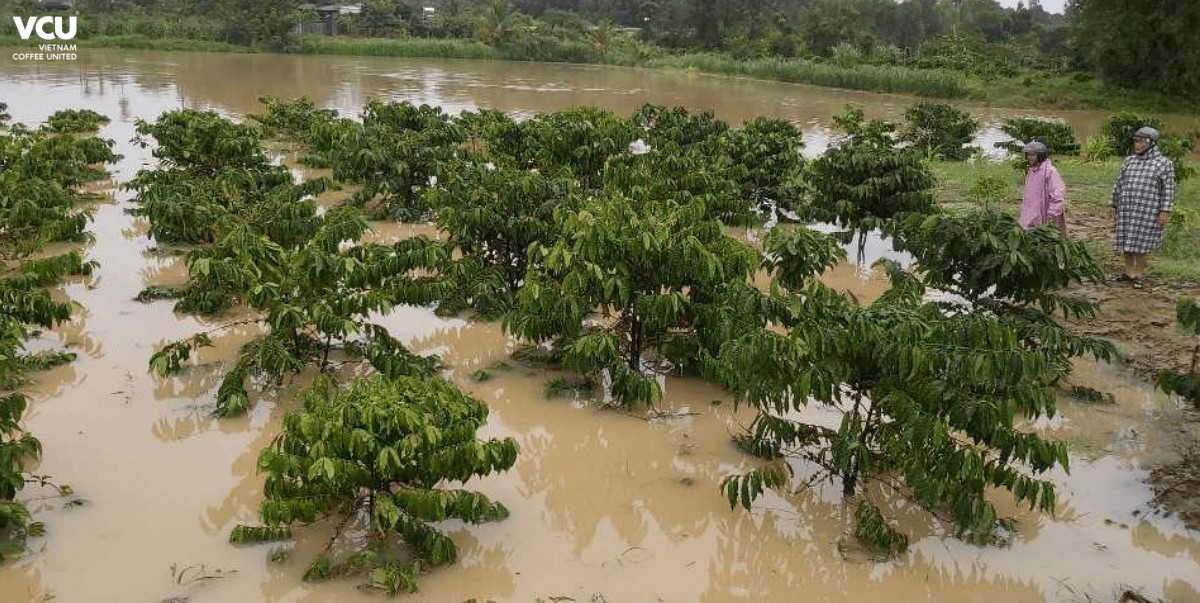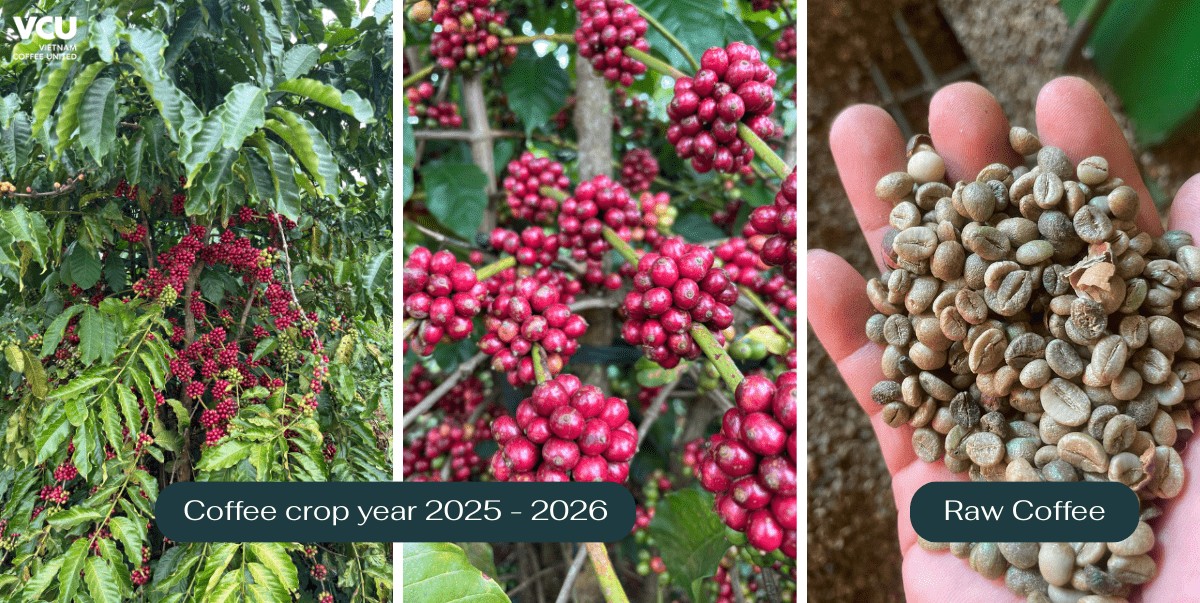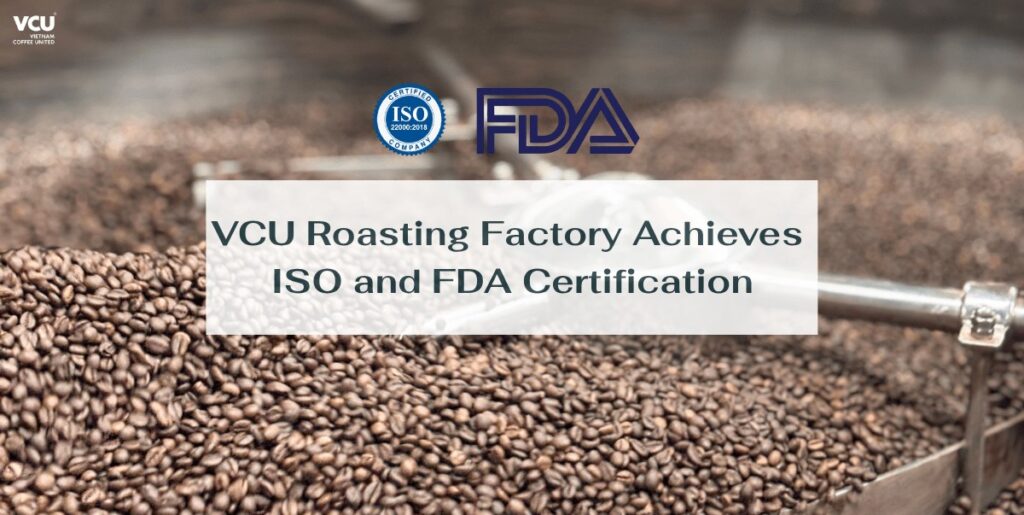Crop Year 2025 – 2026: Central Highlands Hit by Heavy Rains, Sun-Dried Coffee Delayed
The Crop Year 2025 – 2026 is entering its peak period, while extreme weather conditions in the Central Highlands, including heavy rains, flooding, and landslides – are causing serious disruptions. These conditions are limiting sun-drying capacity and significantly extending the completion time for new crop sun-dried lots.
Meanwhile, the United States’ evolving trade policies toward Brazil, alongside global market fluctuations, are driving strong volatility in international coffee prices.
Weather Directly Impacts the Central Highlands
From mid to late November 2025, the Central and Central Highlands regions – Vietnam’s core production areas for Robusta and part of its Arabica, experienced heavy rainfall, flooding, and landslides.

Provinces such as Đắk Lắk, Gia Lai, and Lâm Đồng recorded excessive rainfall, causing waterlogging and making both harvesting and especially sun-drying extremely challenging. Persistent humidity forces farmers to wait for clearer weather before resuming harvest. Many regions are now considering investing in mechanical dryers, increasing production costs and delaying shipment schedules.
Sun-dried coffee, known for its sensory value and quality, has faced a decline in availability due to limited sunshine, resulting in many lots requiring partial mechanical drying.
This creates delays throughout the entire supply chain, from farmers and processing plants to exporters, putting significant pressure on short-term supply.
Coffee Prices Volatile Amid Global Market Dynamics
In November 2025, the U.S. announced adjustments to import tariffs on several Brazilian agricultural products, including coffee. As tariff barriers eased, Brazilian coffee imports into the U.S. became more favorable, leading to:
-
Expectations of increased global Arabica supply;
-
A sharp decline in Arabica futures prices;
-
A chain reaction pushing Robusta prices downward.
Domestically, prolonged rains have limited immediate supply and constrained new-crop availability. Many roasters and exporters are actively competing to secure raw materials for their year-end contracts.
Futures prices for Arabica and Robusta fell following U.S. policy changes, causing international buyers to trade more cautiously. Many importers redirected purchases toward Brazil due to improved tariff advantages.

These combined factors have caused short-term fluctuations in Vietnam’s domestic coffee prices. Therefore, exporters, roasters, and farmers must closely monitor market movements to plan their purchasing and sales strategies effectively.
Impacts on Farmers, Businesses, and the Supply Chain
For Farmers and Collectors
-
Plan for sun-drying alternatives or combine with mechanical drying under prolonged cloudy conditions.
-
Strictly control moisture to prevent mold and black beans.
-
Sort and store properly to maintain stable output quality.
For Exporters
-
Monitor futures markets and U.S. policy changes closely.
-
Strengthen price-risk management strategies through warehouse deposit programs or production deposits.
-
Adjust shipping schedules flexibly as new-crop supply is delayed.

For Roasters and Coffee Brands
-
Choose suitable buying periods based on market conditions.
-
Carefully evaluate the quality of new-crop lots, especially moisture levels and uniformity standards.
-
Develop long-term sourcing strategies if price volatility persists.
A Challenging Yet Opportunity-Filled Crop Year
The Crop Year 2025 – 2026 highlights two major pressures on the Vietnamese coffee sector: climate change and shifting international trade policies. However, challenges also present opportunities. This is the time to:
-
Invest in improved drying and processing technologies;
-
Upgrade quality standards to maintain export competitiveness;
-
Implement risk management tools at the business level;
-
Build long-term strategic planning instead of relying on short-term market movements.

The Crop Year 2025 – 2026 serves as an important test for the entire sector, farmers, processors, exporters, and the full supply chain—as Vietnam moves toward a more resilient and sustainable coffee ecosystem.
Contact Information
VCU Joint Stock Company (VCU JSC)
Address:
– Roasting Facility: Hamlet 4, Chu Prong Commune, Gia Lai Province
– Green Bean Facility: Ia Tong Village, Ia Hrung Commune, Gia Lai Province
– Fanpage: VCU – Vietnam Coffee United
– Email: info@vietnamcoffeeunited.com







